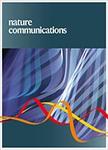版权所有:内蒙古大学图书馆 技术提供:维普资讯• 智图
内蒙古自治区呼和浩特市赛罕区大学西街235号 邮编: 010021

作者机构:Hanyang Univ Dept Life Sci Coll Nat Sci Seoul 04763 South Korea Univ Calif Los Angeles Dept Mol Cell & Dev Biol Los Angeles CA 90095 USA Univ Calif Los Angeles Inst Mol Biol Los Angeles CA 90095 USA Univ Calif Los Angeles Eli & Edythe Broad Ctr Regenerat Med & Stem Cell Los Angeles CA 90095 USA Hanyang Univ Res Inst Nat Sci Seoul 04763 South Korea Hanyang Univ Res Inst Convergence Basic Sci Seoul 04763 South Korea
出 版 物:《NATURE COMMUNICATIONS》 (Nat. Commun.)
年 卷 期:2018年第9卷第1期
页 面:2679页
核心收录:
基 金:Basic Science Research Program through the National Research Foundation (NRF) of Korea - Ministry of Education [NRF-2014S1A2A2028388] Ministry of Science, ICT and Future planning [NRF-2014R1A1A1002685] Training Grant in Developmental Hematology [T32 HL086345] NHLBI [R01 HL067395] Broad Stem Cell Research Center at UCLA National Heart Lung and Blood Institute [R01HL067395] Funding Source: NIH RePORTER
主 题:Development Haematopoiesis Neuroimmunology
摘 要:Drosophila hemocytes are akin to mammalian myeloid blood cells that function in stress and innate immune-related responses. A multi-potent progenitor population responds to local signals and to systemic stress by expanding the number of functional blood cells. Here we show mechanisms that demonstrate an integration of environmental carbon dioxide (CO2) and oxygen (O-2) inputs that initiate a cascade of signaling events, involving multiple organs, as a stress response when the levels of these two important respiratory gases fall below a threshold. The CO2 and hypoxia-sensing neurons interact at the synaptic level in the brain sending a systemic signal via the fat body to modulate differentiation of a specific class of immune cells. Our findings establish a link between environmental gas sensation and myeloid cell development in Drosophila. A similar relationship exists in humans, but the underlying mechanisms remain to be established.